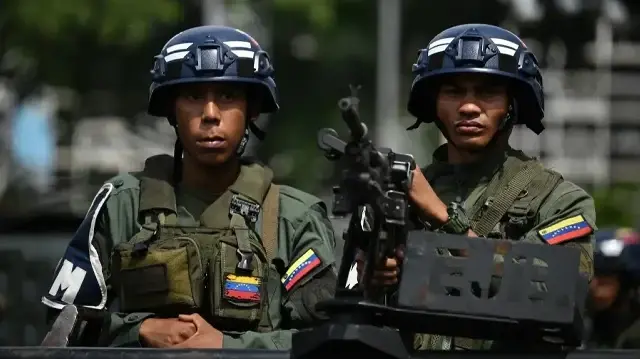Is the United States preparing to invade Venezuela?

In recent weeks, the Trump administration has been signaling a military intervention in Venezuela aimed at regime change. The U.S. Department of Defense has been using the argument that drug trafficking and “narco-terror” pose an imminent threat to the United States, carrying out extrajudicial kill operations in international waters against boats it claims are transporting narcotics. The buildup of naval forces in the Caribbean and President Trump’s announcement that he has authorized the CIA to conduct operations inside Venezuela stand out as developments that heighten the possibility of war. Having pursued a regime-change policy through maximum pressure and international isolation in his first term, Trump appears to be leaning more heavily on military and intelligence operations in his second. As the likelihood of military intervention and occupation grows—something that could drag America into a “new Vietnam” scenario in South America—Trump faces both legal and political obstacles to the use of force. His comments suggesting that Venezuela’s leader Maduro “wants to talk,” however, point to the possibility that the administration may settle for a show of force rather than a full-scale invasion in the short term.
STRATEGIC OBJECTIVE
It’s clear that Washington’s pressure strategy on Venezuela isn’t solely about combating drug trafficking. The Trump administration, which tries to ground its official narrative in the claim that Venezuela produces “narco-terror” at a state level, argues that drug trafficking poses a direct national-security threat to the U.S. By doing so, it bypasses the requirement that Congress formally declare war and uses the authority to carry out military operations. The steps it has taken go far beyond signaling a new era in the war on drugs. The military buildup in the Caribbean, the operational authority granted to the CIA, and roughly 20 boat attacks conducted by naval forces point to a broader goal. The administration, which openly declares its intent to change the Maduro regime, is raising the stakes by saying that the option of doing so through military intervention is on the table.
Yet it seems more realistic that America will try to extract concessions while allowing internal collapse to unfold under growing pressure, rather than toppling Venezuela’s leadership through an invasion or direct military intervention. By doing this, Trump can maintain the show of force to reinforce his image while avoiding the cost of a new war. A flexible policy that keeps Maduro under constant pressure through frequent military operations appears more likely than removing him in one swift American intervention. In doing so, Washington also signals its claim over the region in response to Russia and China’s expanding influence in recent years. Pressure on Venezuela, which holds the world’s largest proven oil reserves, clearly gives the U.S. leverage in its global power struggle with Russia and China.
INTERVENTION SCENARIOS
It’s plausible that the Trump administration will opt for a hybrid intervention built on limited and phased military operations rather than a full-scale ground invasion. The naval buildup off Venezuela’s coast enables a maritime blockade and precision strikes. Increased activity by the CIA and special forces inside the country could theoretically pave the way for the regime to unravel from within. But as the rhetoric of military threat intensifies, support for Maduro may grow, and the regime could also seize the opportunity to conduct domestic “purges.” Because the U.S. does not want another Vietnam, Iraq, or Afghanistan, the intervention scenario could evolve into a model where counterterrorism is used as a tool for regime change. It’s already certain that regime change in Venezuela will not be as “easy” as the 1990 U.S. invasion of Panama that removed Noriega.
Political obstacles at home, regional backlash, and global power-balance dynamics stand as major challenges for the Trump administration against the possibility of an invasion. American public opinion is firmly against a new foreign military engagement, and getting Congress to authorize war is nearly impossible for Trump. This is exactly why he relies on the narco-terrorism argument. Moreover, because he has failed to deliver results on cost-of-living issues, alienated Hispanic voters with his immigration policies, and faces fractures within his base due to the Epstein scandal, Trump’s popularity is at very low levels. The fact that countries like Brazil, Colombia, and Mexico are already raising their voices against a possible invasion shows that the U.S. would struggle to gain regional support. Russia’s military presence in Venezuela also gives Putin an option to counter any American invasion scenario. Considering these factors, it can be said that Trump’s approach to Venezuela is based on a conflict strategy that keeps pressure intense yet controlled, rather than a classic occupation.
Although Washington is trying to weaken the Maduro government and assert itself as the key power in Latin America through this pressure strategy, it is widely understood that a direct invasion is not very realistic. Therefore, the administration’s military buildup and the Pentagon’s extrajudicial killings of smugglers can be interpreted as Washington using the language of drug-war enforcement to show it still calls the shots in the region. In this context, Venezuela stands out as one of the hottest fronts in the global power struggle between the U.S., Russia, and China. The best-case scenario for the Trump administration would be that its maximum-pressure strategy forces Maduro out and brings a government aligned with the U.S. to power. The worst-case scenario would be launching a full-scale invasion and getting trapped in a guerrilla war that lasts for years. As a result, we can predict that Trump will choose a middle path—continuing military operations while avoiding a large-scale war.
Reklam yükleniyor...
Reklam yükleniyor...








Comments you share on our site are a valuable resource for other users. Please be respectful of different opinions and other users. Avoid using rude, aggressive, derogatory, or discriminatory language.